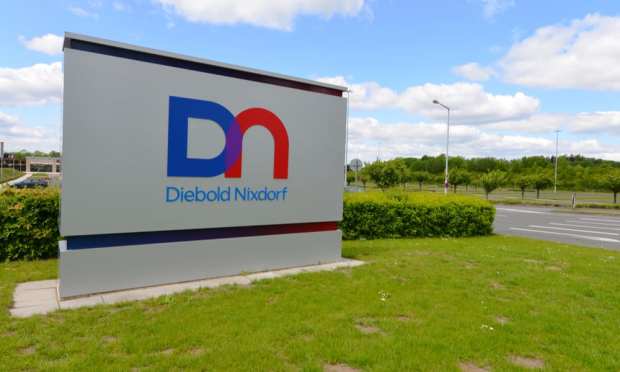Diebold Nixdorf On The Roadmap To The Post-COVID-19 Bank Branch Transformation

As the nation tiptoes toward phased reopenings and embraces a return to at least some life lived in physical spaces as the curve flattens, we’re unlikely to return to banking as it once was.
In an interview with PYMNTS, Simon Powley, head of global banking and digital strategy at Diebold Nixdorf, said financial institutions (FIs) are likely to see incremental shifts that combine digital activity with brick-and-mortar visits.
“There’s a nervous anticipation on the part of FIs as they look toward post-lockdown reopenings,” he noted. “They’ve had to learn very quickly about what’s changing in their environments. They’ve had to protect their employees and their customers, but they want to get back to business.”
At a high level, said Powley, FIs are looking to recommendations from the Centers for Disease Control and Prevention (CDC) and local municipalities for what needs to be done to operate in as normal a setting as possible.
But along the way, he added, the branch experience is on the cusp of marked change. Diebold Nixdorf has seen efforts across banks — for the short term, at least — to reduce the number of customers inside the branch, in some cases appointing special hours for immune-compromised or otherwise vulnerable populations.
In other cases, FI staff members have been deployed at branches to help direct customer flow, monitor social distancing and taking individuals’ temperatures before they enter.
But longer term, from a pure “interaction standpoint,” said Powley, there will be a hybrid model of sorts that takes root within financial services.
Namely, people will want to transact digitally, but interact physically.
Consumers, he predicted, will want to conduct simpler transactions, such as deposits and withdrawals, through the use of mobile devices or at ATMs. In this way, digital transactions will continue to increase.
“But when they want resolution of major problems, or want to take advantage of products and services, they may do research online, but they will want to talk with someone about life events, get support and have a sense of culture and comfort,” said Powley.
There still remains a significant cohort of branch-dependent customers, he noted, with a nod toward older demographics. He said there has been movement by FIs to shift these consumers to at least some tech-aided banking, through digital messaging and other efforts. Some banks have reached out and equipped older consumers with tablets, for example.
Generally speaking, Powley said that customers — even those who may need some guidance and education from their FIs about digital transactions — will gravitate toward the path of least resistance.
This indicates that banking customers will continue to embrace at least some digital channels, including those offered at the branch. As they look to streamline operations at the branch level, FIs will have to educate their own employees about how to support and demonstrate the advantages of technology to their end customers as they do everything from open new accounts to apply for mortgages, said Powley.
Business Banking, Too
Beyond the shifts in retail banking, FIs are still navigating changes in their relationships with corporate clients, particularly small- to medium-sized businesses (SMBs). Smaller firms have been scrambling to shore up their own finances amid a recession and embrace digital processes as their own brick-and-mortar operations have been shuttered.
When it comes to banking, not as much work has been done with SMB customer journeys in terms of how they interact with their financial solutions as much as consumers,” remarked Powley. “So, it’s not quite as fluid.”
SMBs, he said, are branch-dependent when it comes to banking, as SMB owners typically have spent more than an hour per week transacting at branches and tend to keep their personal and business relationships at the same FI.
To improve their SMB banking relationships, FIs need to improve the look and feel of deposit automation and boost self-service transactions through higher-tech ATMs, Powley said.
Looking ahead, “there needs to be a lot of focus on what I’d call integrating channels,” he said. That means SMB owners can begin a transaction through digital means — on a mobile phone, for example — and finish up at the branch, perhaps at an ATM.
Powley noted that improvements in hardware and software — and the availability of QR codes or video capabilities — help improve flexibility, as transactions can be finished after hours or can be done as cardless transactions.
“The employee gets a receipt validating the amount and the deposit that’s been made,” said Powley. “The business owner gets a message on their smartphone stating that the deposit was made.”
More immediately, as businesses reopen and as consumers venture out, said Powley, “you’re going to see a lot more appointment-setting,” and measures aimed at making sure employees and customers do not, for example, share tablets on site.
“Banks and credit unions that have already invested in technology are faring a little better and have the equipment in place that will get them through this phase,” Powley told PYMNTS. “Other banks that have not made these investments will be a bit more challenged.”